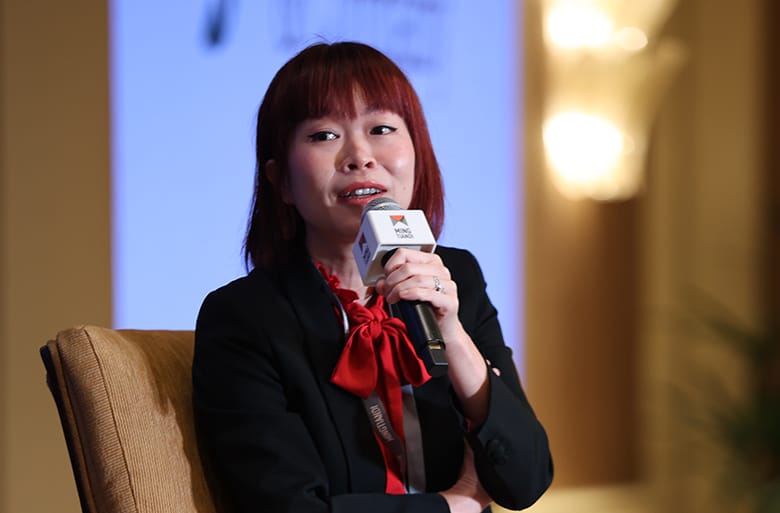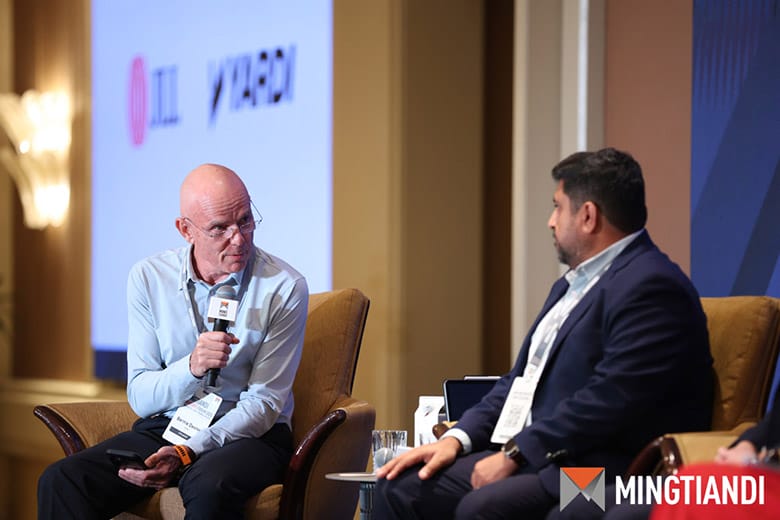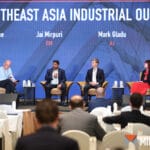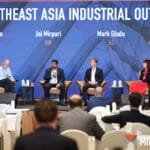As higher interest rates limit opportunities for core acquisitions and rising labour costs drive manufacturers out of north Asian markets, Southeast Asia is becoming a top target for development of industrial real estate, according to panellists from ESR, JLL, and Baker McKenzie speaking at the Mingtiandi Singapore Forum on Tuesday.
“I think in terms of what deals are getting done, core in the region has become harder to do, just harder to justify,” said Jai Mirpuri, head of Singapore development and Thailand at industrial ESR. “Development is something that has kept pushing on because there is a secular demand for space. A lot of what we’ve been doing in Southeast Asia has been development and mostly greenfield development because we still have that need I think in the industry.”
With rising labour costs encouraging investors to look for more affordable locations, Mirpuri sees Southeast Asia as a natural place to relocate, with Thailand, Vietnam, and Indonesia offering cheaper and more cost effective options for investors. He added that, in 2023, Thailand has seen its largest number of industrial land sales since 2007.
Mirpuri was speaking in the Southeast Asia Industrial Outlook panel at the Mingtiandi event after Hong Kong-listed ESR announced in May announced a $235 million plan to develop two industrial parks in Thailand. During that same month, the world’s third largest listed real estate fund manager also unveiled plans to build three logistic parks in Indonesia.
Joint Ventures and Build-to-Suit
Appearing in the same panel, Mark Gladu, senior director for Asia Pacific logistics and industrial capital markets at JLL, agreed with Mirpuri on the trend toward more development projects in the region, while also noting that more global investors are choosing to team up with local developers to build industrial projects.

Sharon Tan of Baker McKenzie Wong & Leow speaking at the Mingtiandi Singapore Forum
“Something that is happening quite a lot more, which we hadn’t seen too much of in Southeast Asia, is joint ventures where a foreign capital (investor) enters a new market,” Gladu said. “They don’t have the team on the ground. They don’t want to risk building that team across Southeast Asia. But we try to help them find a local partner who has some expertise,” he said.
Gladu also noted that, with higher interest rates making developers more conscious of the risks of speculative development more players are turning to building new facilities to the requirements of end-users.
“A few areas we’ve really seen (developing) are build to suit opportunities in Southeast Asia,” Gladu said. “When you show up with the tenant, you’re not taking massive risk on the land and actually building it out, which leads to higher returns.”
Sharon Tan, a local principal with international law firm Baker McKenzie Wong & Leow, said that her team in Singapore is also seeing more facilities being developed, or renovated to meet the needs of specific tenants and tied the trend to growing demand from online shopping providers.
We are also seeing a lot of a build to suit and retrofitting of aging assets, basically to make high tech logistic warehouses,” Tan said. “In Southeast Asia there’s demand for e-commerce and for online shoppers, we are more demanding now,” she added, pointing to expectations of ever-faster deliveries.
Chinese Players on the Move
One of the factors cited by the panelists as driver of industrial investment in the region is the expansion of Chinese manufacturers into Southeast Asia.

Bernie Devine of Yardi puts a question to Jai Mirpuri of ESR at the Mingtiandi Singapore Forum
“In Singapore, we are seeing a lot more Chinese biomedical companies coming to invest and to set up the R&D headquarters for the region,” Tan said. “So of course, one of the key challenges we see is that it is very important for this Chinese companies to seek legal and technical advice very early on in the stage just to avoid pitfalls in the transaction.”
Tan pointed to challenges to companies investing in the biomedical sector as an example of hurdles that investors need to overcome.
“You need to get a lot of regulatory approval when it comes to dealing with biopharma products,“ Tan said. “There will be zoning issues, you know, approvals from the National Environment Agency and of course JTC, our biggest and industrial landlord in Singapore, will also have its own slew of requirements.”
ESR’s Mirpuri also sees the expansion of Chinese manufacturing into Southeast Asia as a major element of industrial investment in the region.
“And a lot of this capital (investing in Thailand) has come from, what we see anecdotally, from Chinese and Taiwanese manufacturers looking to set up shop there,” Mirpuri said. “And the kind of industry that they’re looking at is a slightly more high tech because of the number of engineers, trained, qualified professionals that you can have access to in Thailand, plus the incentive policies that are very streamlined with the Board of investment there.”
JLL’s Gladu also noted the growing Chinese presence in Southeast Asia, and tied the trend not just to cheap labour, but also as a way for mainland companies to expand their sales.
“The Chinese have made a big move (into Southeast Asia) on the manufacturing side itself, obviously chasing lower costs for employment,” Gladu said, “But it’s also opening them up to new markets to sell into. A good example is EV related companies, whether it’s assembling the cars, building the batteries, the parts for the cars, (they) are really heading into Indonesia, into Thailand, and it is starting to spread across Southeast Asia.”












Leave a Reply